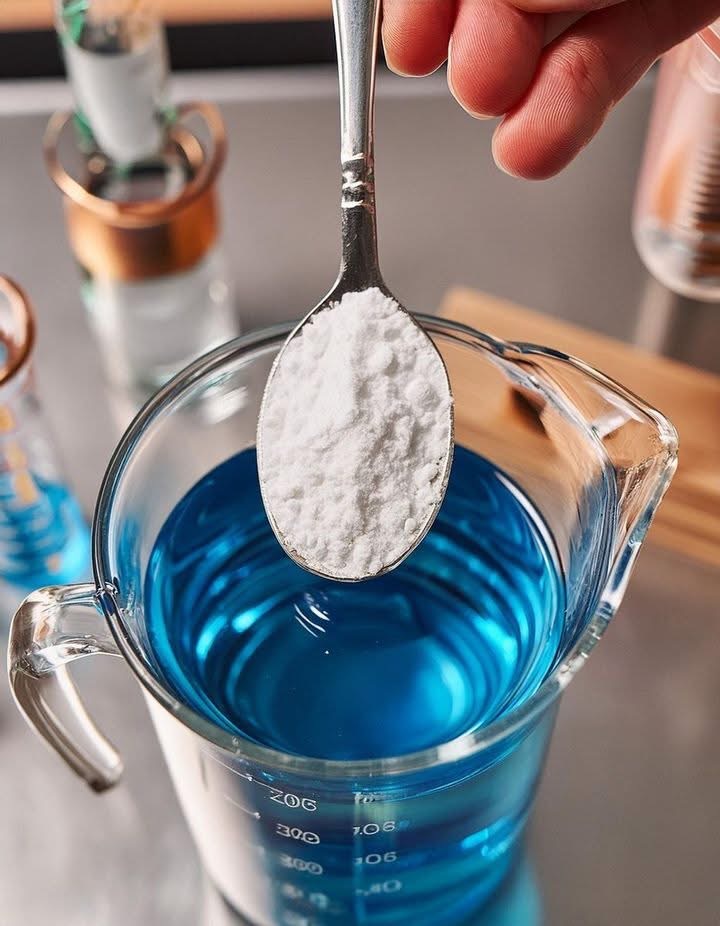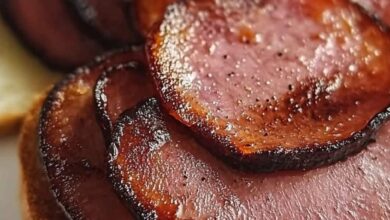The Fascinating Reaction Between Baking Soda and Blue Liquid: Science in a Spoon


The Fascinating Reaction Between Baking Soda and Blue Liquid: Science in a Spoon
Introduction
The image captures a simple yet intriguing moment in science—a spoonful of white powder, most likely baking soda (sodium bicarbonate), being added into a beaker filled with a mysterious blue liquid. While this may look like an everyday action, it represents one of the most fundamental principles of chemistry: reactions between acids, bases, and indicators. Such experiments are not only performed in professional laboratories but can also be carried out in kitchens and classrooms as fun demonstrations of science in action.
Ingredients & Materials
To recreate a similar experiment, you would need:
Baking Soda (Sodium Bicarbonate) – a white, powdery, alkaline substance.
Blue-Colored Liquid – often water mixed with a pH indicator (like bromothymol blue, litmus solution, or food coloring for visuals).
Glass Beaker or Measuring Cup – to hold the liquid.
Spoon – for measuring and adding the powder.
Optional Additives – vinegar, citric acid, or lemon juice to intensify reactions.
Step-by-Step Instructions
- Prepare the Liquid
Fill a glass beaker or cup with water. If you want to highlight chemical reactions, add a few drops of pH indicator like bromothymol blue, which turns blue in alkaline solutions and yellow in acidic ones. - Measure the Baking Soda
Scoop about one spoonful of baking soda. - Add Baking Soda Slowly
Sprinkle it gently into the blue liquid and observe. If the liquid contains an acid, bubbling and fizzing will begin. - Optional Acid Addition
For dramatic effects, add a few drops of vinegar or lemon juice. The fizzing increases, releasing carbon dioxide gas.
Methods & Observations
- Without Acid: The baking soda dissolves, making the liquid slightly more alkaline. If the blue color comes from a pH indicator, it may deepen in shade.
- With Acid: A visible chemical reaction occurs. Bubbles form due to the release of CO₂ gas, showing the classic acid-base neutralization.
- With Food Coloring Instead of Indicator: The visual change is less dramatic, but the bubbling effect still impresses.
History
Baking soda has been used for centuries. The ancient Egyptians reportedly used a natural form of sodium carbonate in cleaning rituals. In modern chemistry, baking soda became a household essential for cooking, cleaning, deodorizing, and even in school science experiments. One of the most famous reactions involving it is the volcano experiment, where vinegar and baking soda simulate an erupting volcano.
Benefits
- Educational: Demonstrates pH, neutralization, and gas release.
- Practical Uses: The same reaction powers cleaning agents and fire extinguishers.
- Safe & Accessible: Non-toxic and available in almost every household.
Formation of the Reaction
The chemical reaction can be described as follows:
NaHCO₃ (baking soda) + H⁺ (acid) → Na⁺ + H₂O + CO₂↑
This means sodium bicarbonate reacts with acids to produce water and carbon dioxide gas (bubbles).
Nutrition & Health
Baking soda is sometimes consumed in small amounts as an antacid to relieve heartburn and indigestion. However, overuse can lead to health problems due to excess sodium intake. Always consult medical advice before using it internally.
Conclusion
The simple act of dropping baking soda into a colored liquid opens the door to understanding chemistry in everyday life. Whether used for cleaning, cooking, or experimenting, it reminds us that science is everywhere, even in our kitchens.
For the Lovers of Science
This experiment is especially loved by:
- Students – who enjoy seeing reactions firsthand.
- Teachers – who use it to explain acids, bases, and gases.
- Science Enthusiasts – who appreciate the beauty of ordinary materials producing extraordinary effects.
✨ In the end, what looks like a spoon of white powder falling into a blue liquid is much more than that—it’s a doorway to curiosity, creativity, and chemistry.



